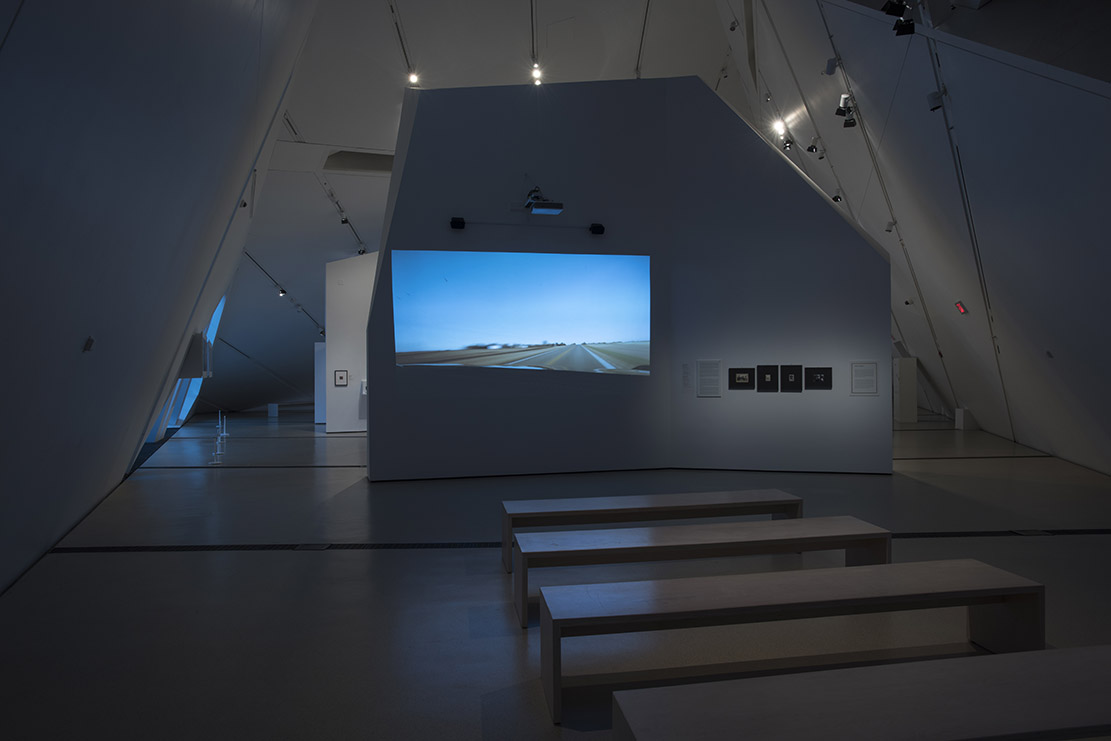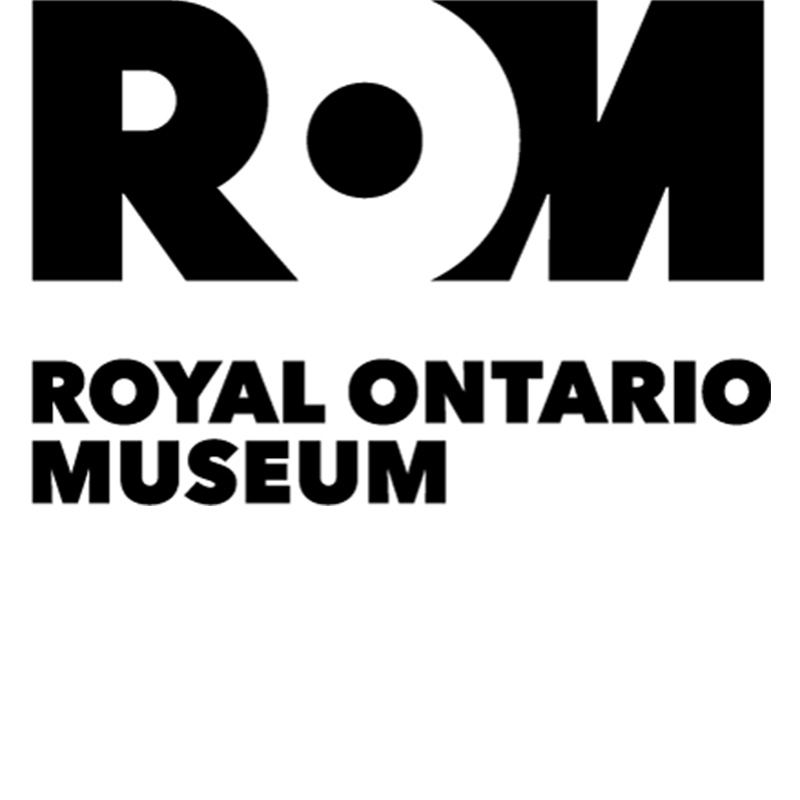Exhibition Overview // The Family Camera (May 6 -October 29, 2017) @ Royal Ontario Museum
/By: Deepali Dewan and Jennifer Orpana
The Family Camera
THE FAMILY CAMERA, INSTALLATION VIEW (J. Orpana, 2017).
The Family Camera exhibition explored the relationship between photography and the idea of family, and it looked at family photographs as a cultural practice through the lens of migration. In Canada, migration is central to family history, whether recent or in the past, and over short or long distances. Family photographs play an important role in reflecting and shaping these experiences. With nearly every photograph featured in this exhibition coming from a Canadian home, The Family Camera shed light on how family photos reflect and shape a sense of self, family, community, and nation.
The exhibition featured over 200 objects, mostly photographs and stories collected through The Family Camera Network. It also included loans from private and public collections, works by artists Jeff Thomas, Deanna Bowen, and Dinh Q. Lê, and an immersive installation created by students in OCAD University's Digital Futures program.
This exhibition was organized by the Royal Ontario Museum (ROM) with the support of The Family Camera Network and it was presented concurrently at the ROM (May 6-Oct. 29, 2017) and the Art Gallery of Mississauga (May 4-2017). It was part of the ROM’s sesquicentennial programming and it was a primary exhibition in the Scotiabank CONTACT Photography Festival. It was curated by Deepali Dewan (lead), Jennifer Orpana, Thy Phu, Julie Crooks, and Sarah Bassnett, with the assistance of Sarah Parsons and Silvia Forni.
The Experience
The goal of this exhibition was to inspire people to think about family photographs in new ways. It aspired to elevate the humble snapshot, and to illuminate the vital role of photography in negotiating experiences of migration and in representing, or resisting, popular conceptions of family. Design strategies played a significant role in helping to achieve these goals. For example, the entrance was a mirrored hallway with a selection of digital reproductions of family photographs showing people with cameras. This design literally visualized “the family camera” with images spanning over a hundred years. The mirrored surfaces reflected visitors in an infinity mirror effect. It placed viewers in the position of photographic subject, hopefully inspiring them to think about the role of photography in their own family lives. This design signalled from the beginning that visitors were meant to see themselves in the exhibition.
THE FAMILY CAMERA, INSTALLATION VIEW, 2017. Courtesy of the Royal Ontario Museum © ROM. Photo Credit: Brian Boyle, MPA, FPPO.
At the end of the mirrored corridor, there was an introductory panel juxtaposed with a wall-sized enlargement of a 1979 snapshot photograph of a boy at an airport. The composition and colour of the image is evocative, and was made even more striking when presented mural-sized. The boy in the image is Hon Lu, a FamCam participant, at age five. In the image he holds a doll and stands in front of several bags and large green and white box. He looks out to the photographer, who was his mother, an avid photographer. Behind him, the airplane parked for boarding symbolizes a journey that is about to take place. From the family’s interview, we know that after the fall of Saigon in 1975, the Lu-Thai family fled Vietnam in a wooden boat, leaving everything behind. Hon’s mother, Luong, had to leave her family photos behind and sent a letter to her parents who were still in Vietnam to ask them to mail the photos to the family’s temporary residence in Hong Kong. In the exhibition, beside the enlargement was a letter in a frame. It was the last letter from Hon’s grandfather, which confirms that he sent the family photographs as requested. Sadly, the boat that Hon’s grandparents took to escape, shortly after sending this letter, sunk and they did not survive. This photo of Hon was taken during a stop-over at Narita Airport in Japan on the way to Canada, and the contents of the green and white box: the family photographs that were sent by the grandparents. The Lu-Thai family story unravels to reveal: the significance of family photos on personal and cultural levels; the ways that photos are linked to experiences of loss and recovery; and the connections between family photography and migration. As such, this photograph touches on many of the themes that the curators sought to explore and it served as an introductory image in the larger exhibition. The enlargement of this and one other image was meant to compel visitors out of a familiar comfort zone with small family photos. The exhibition sought to inspire visitors to take time with individual photographs and their stories and to think about this genre of photography with a new appreciation.
THE FAMILY CAMERA, INSTALLATION VIEW, 2017. Courtesy of the Royal Ontario Museum © ROM. Photo Credit: Brian Boyle, MPA, FPPO.
The curatorial team wanted to make several interventions into the study of family photography in Canada through this exhibition. The Family Camera aspired to tell a multiplicity of stories and to explore many approaches to both photography and the idea of family. It did not claim to represent a community or nation. The works presented in the exhibition were selected from those people who participated in the early collecting efforts of The Family Camera Network. At same time, there was a desire to represent marginalized people and their experiences in ways that were normalized in the exhibit narrative and that resisted simplistic, celebratory discourses of Canadian multiculturalism and diversity. The Family Camera sought to show visitors that family photographs are not simply photographic images, but that they can be any object or document that may occupy a domestic space and is infused with familial meaning. It acknowledged that families are not only connected by blood, but can also be chosen. It considered what family archives can tell us about the significant role of the state in family formation, and by extension which family photos could and could not be taken because of state policies. The Family Camera broke away from popular conceptions that family photos are boring, nostalgic, or simply amateur, by demonstrating how snapshots are not only personally, but also politically, socially, and culturally significant. It asserted that family photographs do not simply document family history but rather are productive agents that have shaped ideas of identity and understandings of family. It acknowledged that for some families, photography is not the only method of preserving family history. Finally, it resisted the idea that family photography is universal by presenting the genre as a shared cultural practice that is experienced differently.
Opening event of The reframing Family PHotography conference at The Family Camera exhibition (M. Kasumovic, 2017).
Thematic Sections
The Family Camera was a thematic exhibition that considered the social, political, and technological influences that impact how we conceptualize and represent family. The five sections could be viewed in any order.
On the Move
The heart of the exhibition was a section entitled, “On the Move,” which explored how, in the 20th century, family photography evolved in a world of increased mobility. The photographs featured in this section included departure and arrival images; snapshots that capture experiences of migration and settling into new communities; albums and photographs used in the adoption process; and a wall featuring over a century of tourist photos of Niagara Falls that was hung salon-style. Other examples showed how family photos move when people cannot―through the mail, hand-delivered on someone’s behalf, or shared through social media. In some frames, visitors could see the front and back of an image including the hand-written notes that attempted to create a familial intimacy and strengthen bonds between family members separated by geographic distance. Born-digital images were presented in their original formats on digital screens. This section helped to illustrate how the stories behind seemingly ordinary images can reveal complex emotions and experiences of mobility.
THE FAMILY CAMERA, INSTALLATION VIEW, 2017. Courtesy of the Royal Ontario Museum © ROM. Photo Credit: Brian Boyle, MPA, FPPO.
Cameras for the Family
The exhibition explored how photography became an integral part of family life through a partial chronology of “cameras for the family.” Rather than the professional level, high-end cameras often included in photography exhibits, this display focused on cameras that were cheap, mass produced, and accessible to a wide audience. For example, the display included box cameras, folding cameras, Bakelite cameras, Polaroid cameras, and toy cameras. It also included cameras that could be ordered through the mail using a few cereal box tops and a small shipping and handling fee, as well as disposable cameras often used for travel and family events. The timeline ended with a consideration of the changes brought about by digital cameras and the smart phone, which have profoundly impacted the practice of making family photos. The cameras were juxtaposed with reproductions of vintage ads to show how advertising played an instructive role in teaching consumers how to compose the perfect snapshot.
The Family Camera, Installation view (M. Kasumovic, 2017).
Snapshots Don’t Grow Up
“Snapshots don’t grow up” was a section that explored popular visual tropes used to represent childhood in family photography: the baby photo, the birthday photo, photos of girls with their dolls, and Christmas snapshots. As scholars such as Nancy Martha West have noted, early Kodak advertisements tapped into sentimentality and nostalgia and urged parents to capture childhood through photography. They showed parents composing and taking photographs of “Kodak moments.” This served to instruct consumers how to do the same, resulting in familiar scenes that often reinforced gender norms, as well as helping to establish visual conventions that persist to this day. The photos in this section were juxtaposed with reproductions of similar Kodak ads to invite viewers to think about how popular culture, and more specifically Kodak marketing, has helped to produce and normalize specific representations of family and childhood in family photo collections. Some images in this section revealed conventions breaking down, since children are not always willing subjects.
THE FAMILY CAMERA, INSTALLATION VIEW, 2017. Courtesy of the Royal Ontario Museum © ROM. Photo Credit: Brian Boyle, MPA, FPPO.
State of Family
While snapshots are seemingly ubiquitous, the curators wanted to acknowledge the role of the State on how families are formed, experienced, brought together, torn apart, and represented. Snapshots offer the most popular, affordable, and accessible way for us to see and understand our domestic lives. But sometimes state policy determines which photos can be taken, who gets recognized as a family, and therefore what a family photograph looks like. Without snapshots, marginalized communities may insert official photographs into their family archives, linking national and global histories with personal memories, reframing official images and creating archives that reimagine the family. At the same time, their own family snapshots challenge official images preserved in state archives. “State of Family,” explored the impact of residential school system, 20th century immigration policy, and Canadian marriage equality laws through press photos, personal photos, and official documents that have become part of family archives.
THE FAMILY CAMERA, INSTALLATION VIEW, 2017. Courtesy of the Royal Ontario Museum © ROM. Photo Credit: Brian Boyle, MPA, FPPO.
Missing Chapters
The Family Camera: Missing Chapters at the AGM, Installation View featuring Crossing the Farther shore (Dinh Q. Lê, 2014; 2017). (T. Hafkenscheid, 2017).
To reflect on how families experience loss or absence of photographs, the exhibition included a section called “Missing Chapters,” which was on display at the Art Gallery of Mississauga (AGM) from May 4 to August 27th, 2017. This section acknowledged that for some families, photos don’t survive, don’t exist, or are not the only way the family preserves their history. Some families have had to destroy or abandon their family photographs due to dislocation or political persecution. Families may have lost photographs due to natural disasters or even technological errors such as the accidental deletion of digital files. There may be “missing chapters” in family albums, from periods of illness, tragedy, divorce, estrangement, or poverty that prevents the ability or desire to take photographs. Even lost family photos linger in the imagination. This section included a small selection of photographs and cameras, as well as an installation of found family photographs by Vietnamese American artist Dinh Q. Lê, entitled, Crossing the Farther Shore (2014; 2017). Visitors were also invited to share their own stories of lost photographs in a participatory video work by OCAD U artists, Katie Micak, Samaa Ahmed, and Mudit Ganguly. This piece, entitled, Lost Photographs, was presented at both the ROM and the AGM.
Works by Contemporary Artists
The exhibition at the ROM included works by contemporary artists who turned to their personal archives to recover, re-frame, and reclaim their family histories.
Jeff Thomas is an independent curator and photographer whose work examines his own history and identity, and more broadly, issues of aboriginality that have arisen at the intersections of Native and non-Native cultures. As an urban-Iroquois, he uses his family archive to portray experiences that break down historical fabrications of “Indian-ness.” By combining ethnographic imagery with his own photographs, he offers an alternative album of memories. Happy Father’s Day (2015) used archival and historical representations of First Nations men to re-presents them as strong faces from the past who are part of an Indigenous genealogy. Husking and Braiding White Corn (2017) captured the sharing of Indigenous knowledge.
THE FAMILY CAMERA, INSTALLATION VIEW, 2017. Large Photographic panels on the left from left to right: Husking and Braiding White Corn (J. Thomas, 2017) and Happy Father’s Day (J. Thomas, 2015). Courtesy of the Royal Ontario Museum © ROM. Photo Credit: Brian Boyle, MPA, FPPO.
Deanna Bowen’s family history has been the central theme of her auto-ethnographic works since the early 1990s. Her work is a personal and professional act of recuperation through engaging with history that emphasizes the power and importance of cross-generational storytelling. The exhibit featured a new work by the artist, We Are From Nicodemus (2017), which is a single-channel video installation consisting of a series of first person interviews, presented in eight episodes that depicts the first time the artist met her cousin, Angela Bates, in Nicodemus, Kansas. This moving autobiographical journey was sparked by a family photo which led the artist to explore her family’s migration from Kansas to Campsie, Alberta in the early 1900s. The interconnected histories of these two towns highlights the entrepreneurial mindset and perseverance of African North American families who sought safe haven in the “promised lands” of the Midwestern U.S. and Canadian Prairies.
We are from Nicodemus (D.Bowen, 2017), Installation view. Courtesy of the Royal Ontario Museum © ROM. Photo Credit: Brian Boyle, MPA, FPPO.
The Living Room
The Living Room was an immersive installation created through projection mapping by OCAD University students in the Digital Futures graduate program, in collaboration with The Family Camera Network and the ROM, under the guidance of class instructors Martha Ladly, Immony Men, Julie Crooks, and Jennifer Orpana. This piece invited visitors to enter a living room space, to sit on a couch, and to experience the stories of three participants. The living room concept was chosen because it is a shared space that exists at the intersection of public and private life. It is a place where families spend time together and receive guests, who become an audience for their family photographs and stories. The participants were: Aylan Couchie, an Anishinaabe artist from Nipissing First Nation in Northern Ontario and a mother of three; Mudit Ganguly, an artist and maker who grew up in Mumbai, India; and Patricio Dávila, a designer and artist born in Santiago, Chile. The stories revealed each participant’s unique relationship with family photography in connection to themes such as parenthood, LGBTQ+ experiences, and migration. Each story was told through interview footage and photo-montages displayed on a TV, as well as family photos projected onto frames on a wall and an album on a coffee table.
The Living Room (Ocadu, Digital Futures, 2017), Installation View. Courtesy of the Royal Ontario Museum © ROM. Photo Credit: Brian Boyle, MPA, FPPO.
Exhibition Outreach & Programming
The Family Camera reached a wide range of audiences. In six months, the exhibition welcomed tens of thousands of visitors. Through free public programming and access initiatives, the exhibition engaged thousands of people. Curators led tours for ROM members, the Photographic Historic Society of Canada, community groups such as the Collecting Personal Archives project, university students, and museum professionals. They also presented talks at the ROM, the AGM, the Chartwell Retirement Residence in Mississauga, the iSchool at University of Toronto, and Blackwood Gallery. The exhibition was viewed by international scholars as part of the Reframing Family Photography conference. Finally, for the night of Nuit Blanche, thousands of people enjoyed free access to the exhibition, a public panel, and displays of large image projections at the ROM (Missing Chapters Revisited) and Union Station (MomenTO presents The Family Camera: On the Move – Toronto).
In the Media
The Family Camera received an enthusiastic response in the media. It was featured in articles for The Toronto Star, CBC News, and The Globe and Mail. As a primary exhibition in the Scotiabank CONTACT Photography Festival, the exhibition was listed as one of the “20 must-see photography shows at Contact 2017” in BlogTO and one of the “11 Projects to See” in Canadian Art. Additionally, the exhibition’s lead curator, Deepali Dewan, spoke about the exhibition on CBC Radio programs, Metro Morning and Ontario Morning, as well as on The New Family: Modern Views on Family Life podcast.
"This show, at the Royal Ontario Museum, is less a nostalgia trip than a potent reminder of the vital role photography played in not just recording but creating family histories in a country as vast and complex as ours." - Murray White, Toronto Star, 4 May 2017.
ROM Exhibition Team
Curators: Deepali Dewan (lead), Jennifer Orpana, Thy Phu, Julie Crooks, and Sarah Bassnett, with the assistance of Sarah Parsons and Silvia Forni
Project Manager: Steven Laurie
Exhibition Design: Emilio Genovese
Interpretive Planner: Courtney Murfin
Lighting Designer: Bob Wash
New Media: Randy Dreager
Conservator: Janet Cowen
Preparators: Myles Zarowny, Aurora Hall
Student Assistants: Tori Abel, Celio Barreto, Sehr Shah
Student Writers: Somer Blight, Simon Solis, Maya Wilson-Sanchez
Translation: Dominique Picouet


























